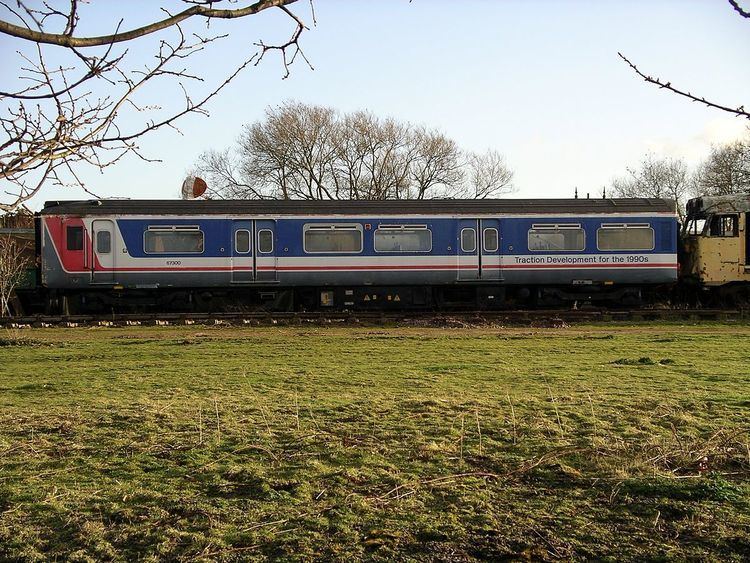Number built 1 | Formation 4 cars | |
 | ||
Electric system(s) 750 V DC (Class 457)25 kV 50 Hz AC (Class 316) Current collection method Contact shoe (Class 457)Pantograph (Class 316) | ||
Class 316 and Class 457 were TOPS classifications assigned to a single electric multiple unit (EMU) at different stages of its use as a prototype for the Networker series.
Contents
Project
In the late 1980s, the Network SouthEast division of British Rail, which operated the railway network in South East England, started to develop a new standard train, known as the Networker. To test out the technical arrangements for the Networker, a test train was used, converted from former Class 210 carriages, which were the prototype 'Second Generation' Diesel Electric Multiple Unit (DEMU), but which never entered fleet service.
Class 457
Initially the test unit was formed for trials on the 750 V direct current (DC) third rail system of the Southern Region, and was numbered 457001. As with all Southern Region electric multiple units only the last four digits of the unit number were actually carried. The unit formation was:
Class 316
Later, the unit was altered to undertake trials on the 25 kV alternating current (AC) overhead wire system used on electrified lines north of the River Thames. The unit was renumbered as a Class 316 unit, number 316999. To enable it to work on the AC electrification, a pantograph trailer from a Class 313 unit 313034 (313134) was inserted into the set, replacing one of the intermediate trailers. This spare vehicle (no. 67400) has since been incorporated into a Class 455/9 DC suburban unit, replacing a damaged Trailer Second Open (TSO) vehicle.
The unit formation was:
Preservation
After the AC trials were complete, the set was returned to the Southern Region for storage, minus the Class 313 trailer, which returned to its previous formation. One of the two driving cars has now been preserved at the Electric Railway Museum, Warwickshire, the other was formerly a spare body shell stored for HSBC Rail, but it was reformed and converted to MSO and placed into Class 455/9 unit 5913 after the 2010 Oxshott rail accident while the remaining intermediate trailer has been scrapped.
Vehicle details are shown below:
Alternative uses of the Class 316 number
Class 316 was originally reserved in the British Rail Fleet List for an AC EMU for the Piccadilly to Victoria (PICC-VIC) underground line proposed for Manchester in the 1970s. The specifications and some outline design proposals for the new fleet was prepared at BR Derby but never proceeded to tender as the project was axed
The Class 316 designation was also used in 1992 for a three car Class 307 EMU used as a testbed unit for new traction equipment.
